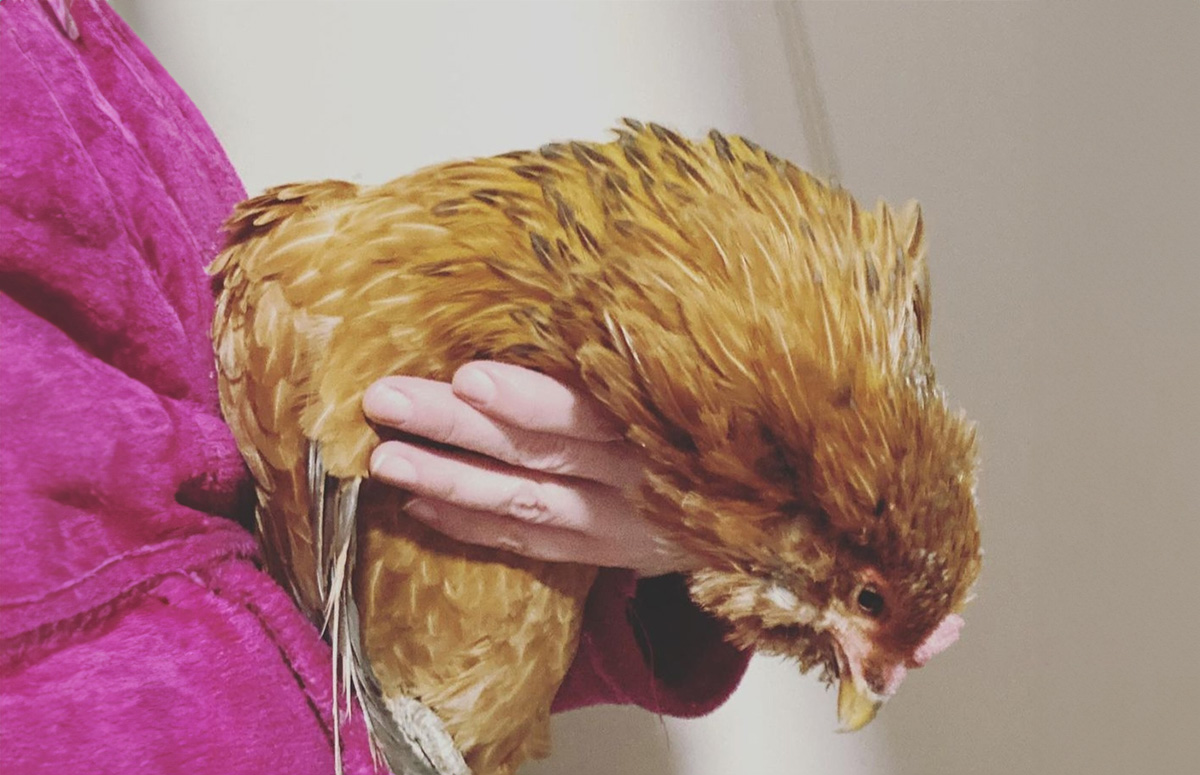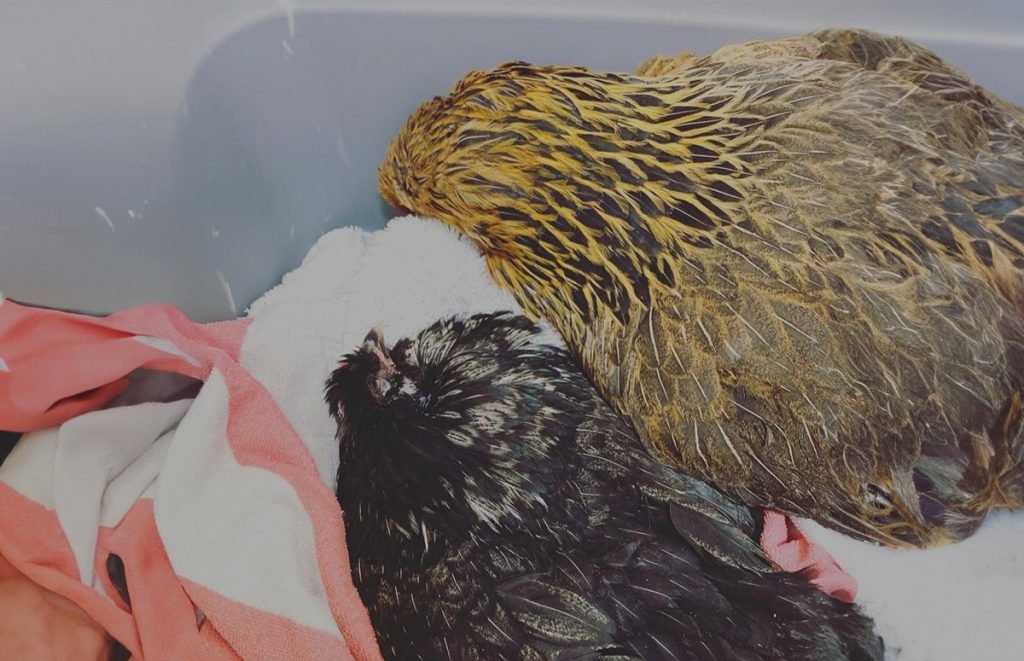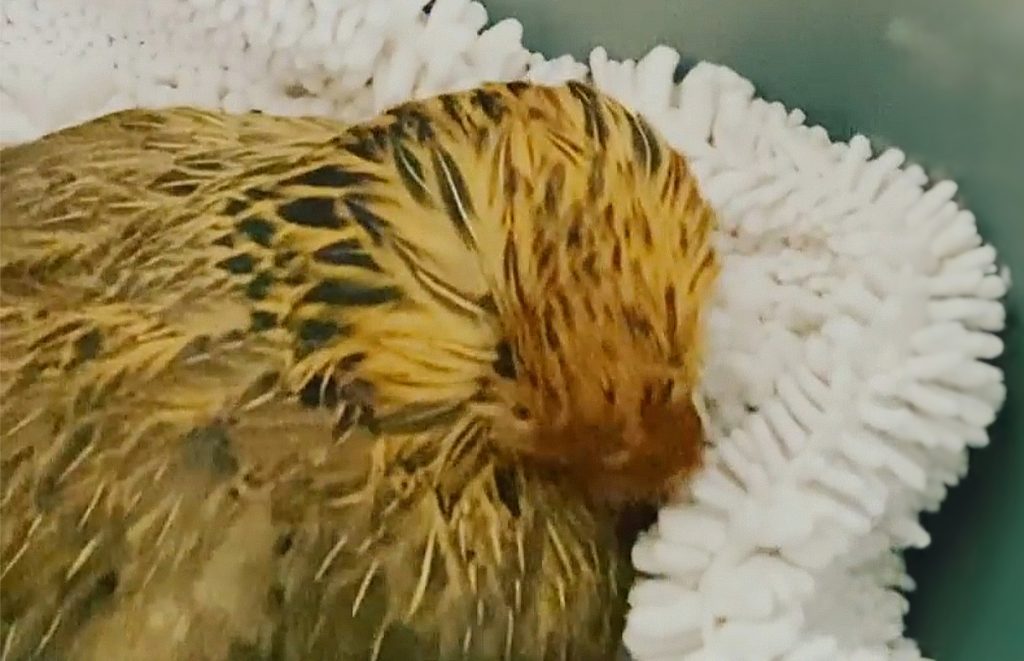Wry Neck In Chickens


Is your chicken’s neck crooked? Is it struggling to keep balance and maneuver the environment? Well, if you answered yes, chances are you are dealing with a case of wry neck.
But what is wry neck in chickens? Is it fatal? Could it be treated, or better yet, could it be prevented? If you are interested in the answers, keep reading – we will explain everything you need to know.
What Is Wry Neck In Chickens?
Wry neck is a crooked neck in chickens that results in an abnormal head position. To an untrained eye, it looks alarming and seems like the chicken has broken its neck. Contrary to common belief, wry neck is not a disease. Instead, it is a symptom of an underlying medical problem.
Therefore, the severity of wry neck depends on the severity of the underlying problem.
Is Wry Neck In Chickens Contagious?
Wry neck is a symptom of a disease, and therefore it is not contagious. However, some underlying causes, such as fowl cholera and Marek’s disease, are.
Also, a wry neck triggered by nutritional deficiencies and intoxications is likely to affect more flock members simultaneously.
Is Wry Neck In Chickens Fatal?
This depends on what is causing the wry neck. Some causes of wry neck in chickens are fatal if left untreated. Wry neck can also be deadly if lasting and prevents the chicken from eating, causing severe malnourishment.

Causes Of Wry Neck In Chickens
There are many causes of wry neck in chickens – from injuries and nutritional deficiencies to infectious diseases and toxins. Here is a more detailed review of the most common causes of wry neck.
Head Injuries
Head injuries are frequent in chickens and can be accidental or due to feather pecking. In both cases, wry neck may occur.
Interestingly, head injuries are more common in crested chicken breeds. This is because the crest feathers are more tempting for pecking.
Congenital Loco
Congenital loco is a genetic (inherited) condition in young chicks. Affected chicks lack the ability to control their neck muscles resulting in abnormal head and neck positions.
Vitamin Deficiencies
Wry neck can be caused by a lack of certain nutrients, especially vitamins, like:
- Vitamin B1: Vitamin B1 is often deficient in chicks eating medicated feed. This is because some ingredients in the medicated food block the use of vitamin B1 (also known as thiamine).
- Vitamin E: Vitamin E deficiencies occur due to low levels in the food. They can also be the result of inadequate selenium intake, as this mineral is vital for proper vitamin E absorption and utilization.
Infectious Diseases
Infectious diseases are a serious problem in chickens. They trigger various signs and symptoms, and wry neck can be one of them.
Wry neck can be the result of infectious diseases, such as:
- Bacterial: Fowl Cholera, Botulism, Arizonosis, Listeriosis
- Viral: Marek’s disease, Newcastle disease, Avian Influenza
- Fungal: Aspergillosis, Ergotism
- Protozoal: Toxoplasmosis
Vaccines
Rarely, in very young chicks, wry neck can be a side effect of the vaccine for Marek’s disease. The vaccine comes in an injectable form and is administered beneath the skin behind the neck.
Environmental Toxins
Wry neck can be the result of neurological conditions triggered by toxins. Toxins are found in the chicken’s environment and food.
Toxic plants, heavy metals, and paints are common culprits. Certain chemicals such as fertilizers, pesticides, and insecticides are also potential toxins.
Signs of Wry Neck In Chickens
Wry neck in chickens manifests with an abnormal head and neck position. It is an umbrella term that covers several scenarios, such as:
- Sideway crooking or tilting of the head and neck
- Twisting the neck and keeping the head upside down
- Stretching the neck and keeping the head tilted upward
- Tucking the head between the legs
In simple words, any head and neck position that is out of the ordinary can be defined as wry neck. Normally, chickens keep their necks and heads in a straight and upward position.

Treatment For Wry Neck In Chickens
The treatment for wry neck in chickens varies based on the underlying cause. Regardless of the specific treatment, affected chickens require supportive care, which includes:
- Isolation: First, isolate the chicken and ensure a stress-free environment. This is particularly helpful if the chicken is usually bullied and likely to sustain other head and neck injuries.
- Assisted Nutrition: More often than not, you will have to help the chicken eat and drink. Because of the neck injury, chickens with wry necks cannot eat and drink independently.
- Monitoring: During treatment, you must carefully monitor the chicken and report its health status to the veterinarian.
- Supplements & Medications: Depending on the underlying cause, the vet may prescribe supplements or meds. In that case, you must adhere to the advice and give them as instructed.
That said, we must note that contrary to popular belief, turmeric is not a cure for wry neck. The anti-inflammatory properties of golden spice can be helpful, but they are definitely not enough to treat the cause of wry neck.
Preventing Wry Neck In Chickens
Yes, some causes of wry neck in chickens are preventable. The most common cause of wry neck, nutritional deficiencies, are the easiest to prevent.
All you need to do is ensure proper intake by giving commercial supplements or vitamin/mineral-rich foods.
Excellent sources of vitamin B1 include brewer’s yeast, cereal grains, and their by-product meals. For vitamin E, you can use broccoli, spinach, sunflower seeds, and avocado flesh (do not give the pit and skin as they are toxic to birds), and for selenium, you can give oil or water-preserved tuna.
Summary
Wry neck in chickens is a symptom rather than a disease. It can affect chickens of all ages but can be more common among certain breeds.
Some causes of wry neck are benign, but others are more serious. Therefore, if you have a chicken with a crooked neck, it is best to consult your trusted vet and get proactive.

Dr. I. Crnec is a licensed veterinarian with several years of experience. She has published work on the effect of vitamin supplementation, egg-laying performances of chickens under heat-stress conditions and the effects of calcium supplementation on eggshell strength.
Credits Featured Image: @the_squirrely_hen 5 (IG)























